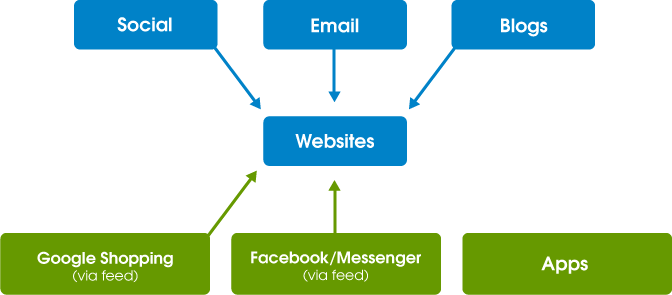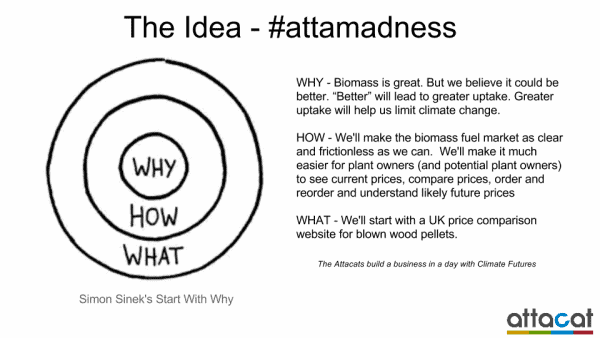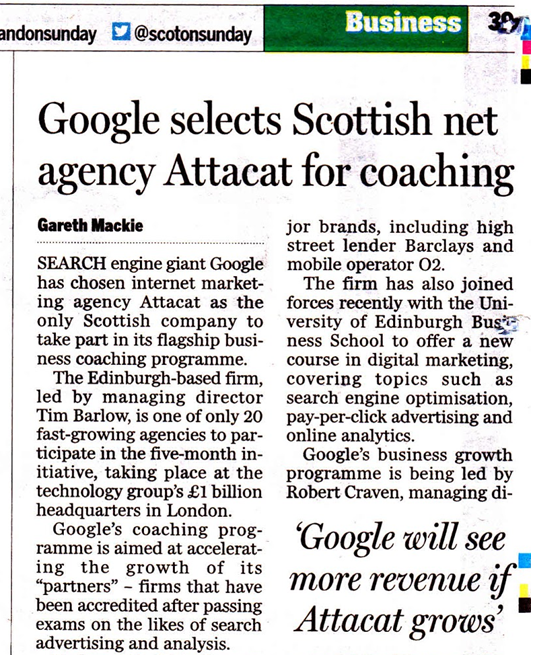If January is a time to tackle what you keep putting off such as losing weight or getting fit, then what better time to get your digital marketing approach to privacy sorted out. The good news is that it isn’t as hard as you think.
Here we set out a handful of simple(ish!) steps to ensure you have a consent process in place for the three digital marketing cornerstones that most businesses rely on, namely:
- Analytics
- Digital advertising
- Email marketing (which is readily adaptable to other direct digital marketing such as chat, push notifications and SMS)
The topic of online privacy is not helped by buzzwords. It’s not helped by cookies and privacy being seen as separate “projects”. It’s also not helped by falling across the separate silos of law, IT and marketing or by GDPR’s complexity and flaws.
However expectations and enforcement are ramping up. And people posing as privacy activists are also seeing non-compliant businesses as an opportunity to ask for money. With the law probably on their side, the costs of dealing with non-compliance are increasingly outweighing the costs of getting your house in order.
As a minimum, it now makes sense to take some sensible steps to avoid being among the easiest targets. It is also becoming clear that a good portion of now standard analytics and advertising techniques, will only be available to businesses able to get and prove that they have “consent”.
Here are five steps that we think everyone should now be taking:
- Get a “Do not pass go” cookie banner that actually works
- Put clear privacy information wherever you collect email addresses and get a linked “preference centre”
- Make risk-based decisions on your approach to targeted advertising and analytics
- Draw up a privacy policy that is known and understood by management and customer facing teams
- Implement automated deletion of out of date contact information
1. Get a “Do not pass go” cookie banner that actually works
Our suggested approach to cookie consent is to make customers take a decision before they can use the site (i.e. an overlay banner). This is all very achievable with a low-cost consent management tool.
What these tools don’t advertise though is that they rarely work out of the box, despite suggestions to the contrary. The user interface will work but the actual placing (or otherwise) of cookies almost always needs a lot of configuring before it does what you expect it to do (i.e. respect the choices your customers make). As a result many companies now have banners that aren’t actually doing what management think they are doing!
The configuring part, which we usually do in Google Tag manager, does need ongoing management as things will “break” or get out of date over time. Yes it’s a process that needs putting in place but it is perfectly doable.
2. Put clear privacy information wherever you collect email addresses and get a linked “preference centre”
The days of assuming that you can do whatever you like with an email address, even one given voluntarily, are over. Instead you need to get permissions for specific purposes (e.g. marketing). The place to do this is the point at which you are given the email address (i.e. the form on your site or app).
Having got permission, you then need to make it easy for permissions to be updated. Rather than just a simple unsubscribe option, a “preference centre” is a better option. All this is a single destination on your site where customers can decide exactly what messages they do and don’t want to receive from you.
Although doing this well (maximizing consent whilst genuinely respecting privacy) requires a clear strategy and attention to detail, technology is finally making it doable. If you are using a tool like HubSpot these consent features will now be built in.
The point, is the ability to do all this is now within the reach of most businesses, which wasn’t the case two years ago.
3. Make risk-based decisions on your approach to targeted advertising and analytics
The first part of this is to understand what analytics and advertising your business is currently involved in. Even use of standard products such Google Analytics, Google Ads and Facebook Ads have quite significant privacy implications.
At its simplest, we suggest getting to answers for the following questions:
- How explicit a consent do we need for Analytics?
- Every company will have different red lines on these questions. You will need to debate them and then draw up a policy..
4. Draw up a privacy policy that is known and understood by management and customer facing teams
It’s easy enough to help yourself to someone else’s privacy policy and put it on your site and pretend all is in hand! However privacy policies today need to be specific to each business rather than the generic ones of old. They need to truly reflect the intricacies of your business and they need to evolve as your business evolves. They should be living documents that are seen as an important part of the customer experience.
Management being involved in the above steps will go a long way to understanding the privacy implications of your marketing activity. Our view is to write the first draft of the policy as a team and only once that is done, get the lawyers to take a look. This will have two primary benefits:
- It will increase understanding across your teams
- It will result in something more customer friendly
5. Implement automated deletion of out of date contact information
Old forgotten about contact information in your systems is a risk. Being proactive about cleaning up data routinely will also deliver a better marketing result. Most modern CRM systems will allow you to set-up automated rules so you can delete information on sensible timelines (and ones tailored to different situations e.g. you’d retain a contact for longer if they have made a purchase than you would if they have never purchased and don’t interact with any of your content).
As with all the other steps, debating and agreeing the right approach for your business is the starting point.
Summary
Doing the above certainly does not guarantee full compliance. Hopefully though they are achievable steps that businesses can make a firm part of their early 2022 plans. We urge you to make this a key New Year’s resolution and of course would be happy to help you on that journey. If you would like to schedule a meeting to discuss any of the above please select an available date from the calendar>>
In the meantime, fingers crossed for a great, uninterrupted, Christmas!
It’s been a pretty long and tough six months for everyone.
To that end we have decided that closing the “office” for two days next Thursday and Friday will be to everyone’s benefit. I would be extremely grateful for your (our clients’) support of this attempt to give the team a break from the screens they have been glued to.
Unlike most agencies, we took a decision back at the beginning of lockdown to not furlough the team. We felt that “if ever there was a time our clients needed us, it’s now”.
And thanks to our client’s support and a huge amount of hard work from the entire team, our business and the vast majority of our clients have muddled through lock-down in reasonable shape. We’ve dealt with the surge in ecommerce and all the uncertainty of the ever changing challenges of the gradual reopening of the economy. And we’ve learned a lot too!
It seems that the country is currently enjoying a degree of normality and I’m keen that the team get a bit of a chance to enjoy this right now just in case, heaven forbid, life becomes more restricted again.
I also want to find a way of saying thank you to the team by giving them an extra couple of days off. I’m obviously biased but we have an incredible team and they really deserve some recognition of that.
Sometimes getting people to take time off requires a bit of a nudge. The team have been incredibly resilient but I want to be sure everyone manages to down tools and ideally get a proper change of scenery for a few nights. If like me, you have managed to get away (anywhere!) this summer you will know what a difference it makes.
So that’s why I’ve chosen fixed dates rather than just adding to an unused holiday pile.
I would therefore like to ask our clients to please:
- Highlight any potential challenges with these two days as soon as possible so we can put a plan in place
- Have a think about what work you may need us to do before the end of next Wednesday
- Support the break as best as you can (your account manager will be in touch with emergency contact methods but I’d obviously be incredibly grateful if you do your best not to use it 🙂
Obviously everything will be left in good shape on Wednesday night and those critical things that need looking after, will be looked after.
Thank you in advance for your support on this and of course all the support you have shown us throughout this period.
The way many organisations plan their online presence today still looks something like this:

Interactions on all channels have the sole purpose of pointing prospects back to the company website, driving them through the funnel in just one location.
But if prospects are happy where they are, why are we so insistent on moving them? Why not communicate with consumers where and how they choose to, not how our technology ‘permits’ them?
You’ve probably started doing this without giving it much thought. For example you’ve probably added third party sites, such as Google Shopping and Facebook, into the mix over time.

Yet these platforms are increasingly becoming product destinations in their own right. It doesn’t take much imagination to add in Facebook and Google Pay and suddenly our customer will no longer bother even touching our websites.
And these platforms are multiplying. You just get to grips with three and then another three appear.
So how on earth can we keep up? The answer – by intelligently pushing out data to all channels from just one centralised source.

By creating a data platform that feeds into all the online platforms, we will give users messages (or the much fabled ‘micro-moments’) within the platforms they reside, rather than trying to drive them away to our sites or apps. Google Shopping, Amazon, Facebook ads, websites, social media, email and messaging platforms are just some of the media that stand to benefit from such an approach – presenting opportunities we can’t afford to ignore.
And how often have you said “Alexa…” recently? If it isn’t yet part of your daily life, it, or something similar will be soon.
Forget Product Pages
In the context of e-commerce, what we should consider is not just product pages but platform agnostic product data. The key is to design a data source for life beyond the product page i.e. think far wider than the traditional e-commerce CMS.
By data I mean all content and attributes (images, stock levels, product title, short description, long description, attributes etc.) so they all have the potential to be stored centrally and distributed intelligently across all platforms.
Forget Page Optimisations
Most CMSs already have integrations with third party apps such as Google Shopping, but these so often remain unoptimised. Time and again we’ve seen dramatically increased revenues from optimising these feeds. Very much like you do with optimising web pages.
The overlap between Google shopping optimisation for AdWords and product page optimisation for organic SEO is huge. It’s much better to approach that as a single task at the “data” level, rather than doing one task at the page level and another at the feed level.
I really enjoyed the recent MozPod interview on Amazon’s SEO ranking factors with Connor Folley of Downstream. He emphasised just how vital it is to tailor both your data and approach to third party retailer sites. An increase in work for retailers we hear you ask? Enter platform agnostic product data…
A centralised data platform could tailor data to Amazon’s specific ranking criteria. All as part of one optimisation process.
Beyond Retail

Being present on multiple platforms doesn’t just apply to e-commerce. Rather than thinking about product data, we can think about “communication data” or perhaps just “messaging.” We need a way of distributing our messages from a central source.
The interesting thing about messages is that they tend to have a much more temporal nature. With product data we can get away with just planning over space. With messaging though we need to to plan over both time and space to create an ongoing experience. Good fun!
Closing Thoughts
It’s time to stop thinking about websites first. We need to take a step back and think “multi-platform.” Reorienting the way we plan our online presence in this way will help to ensure that we are where the customer wants us to be. Let’s stop pushing water uphill. We don’t always need to get customers to come to us.
It’s been just over a month since we used Leap Day (29th February) for our #attamadness “build a business in a day” challenge. It’s obviously been exciting but it’s also been an incredible learning experience.
The TL:DR version of this article is that we’ve quickly and inexpensively learned that the business model is going to need a little bit of a tweak and we are therefore on the road to achieving great things!
Where’s The Woodpicker now?
Since the #attamadness launch day, TheWoodpicker.com has been in the capable hands of Juliet with direction from Charlie. Thanks to messing my knee up on day one of my skiing holiday, I’ve also been able to put the odd hour in here and there too. The social side of things is also beginning to grow, with the launch of a Facebook and Twitter discussion, which we hope to make a monthly thing to bring together suppliers and customers to discuss the issues and questions they may have.
Here’s an interview we did for The Scotsman TV one week after the launch
https://www.youtube.com/watch?list=PLl-Rj1kcCvWQ51r1jxsDjQxzhnlMAEBfH&v=0s7R2N4QAjw
Since then we’ve:
- passed the 100 customer* mark (who we estimate represents around £300,000 worth of annual pellet consumption)
- Built a grandly named “quote management system” – basically a reasonably sophisticated Google spreadsheet (with my personal highlight being the script that I managed to cut and paste to automatically calculate distance between two postcodes)
- Almost got a bank account set-up (yet we’ve still been able to take payments using GoCardless for direct debit)
- Sent our first newsletter
- Most importantly we’ve:
- learned what customers and suppliers don’t want
- continued to talk to a lot of customers and suppliers
What about the money?
We have processed some but it’s fair to say we’ve got a long way to go before we can include the word “profit” in our management accounts! Just because we’ve described people who have used our service as customers, doesn’t mean there isn’t a lot to do before we will be able to describe these people as repeat, loyal customers.
The most important bit of the accounts, though, is that we’ve also spent very little, meaning we still have money in the bank (or “runway” as a start-up would describe it).
Main lessons learned
The disciplines being forced on us as a result of the “business in a day” format has been an incredible learning experience. We jumped in at the deep end and now have no choice but to swim. That means procrastinating or doing it all myself (often my default position!) are just not options. That is incredibly liberating!
The approach has also made the ideas behind “agile” and “lean start-up” very real for me and that is a lesson that will be invaluable for developing Attacat as well as for working with clients to help them achieve their goals.
I suspect that when people first hear the start-up mantra of “fail quickly”, they think of major disaster followed by consoling yourself that at least you won’t make that mistake again.
However, that could not be further from the truth. The first month of The Woodpicker has shown me that the mantra is far more about learning rapidly that some things do not pan out exactly as you might expect. If I was to describe that as “failure” it would be very misleading as actually we have made a huge leap forward.
 The iteration of The Woodpicker we launched on February 29th was entirely based on what we thought customers and suppliers would want. Turns out, it’s not that simple. A few do want what we’re offering and a good number don’t (at least not in its current form). We haven’t yet achieved the level of customer delight that I thought we would.
The iteration of The Woodpicker we launched on February 29th was entirely based on what we thought customers and suppliers would want. Turns out, it’s not that simple. A few do want what we’re offering and a good number don’t (at least not in its current form). We haven’t yet achieved the level of customer delight that I thought we would.
I view this as a real positive though. If we’d done it the traditional way, we would still be debating the wording on the website and building a back-end system to automate the business process and probably still be three months away from getting any real customers to use the system. We would have spent more and learned nothing.
Instead, we built the simplest system we could that allowed customers to interact with us and one month in we’ve learned a huge amount from those customers. Our “price comparison search engine for wood pellet fuel” may only have been a website form. It really hasn’t mattered that our “back-end” was not a nice efficient bit of software (instead it was Juliet literally ringing round the suppliers to get prices and then emailing the information to the customers!). What matters is it has been sufficient to learn a huge amount from real customers.
In lean startup terms we’ve run our first experiment, and are now ready for our next one. And here are the real positives of this approach:
- We’ve got lots of ideas we wouldn’t have had otherwise.
- We’ve demonstrated that there is a real demand for “something” in this space and have started to build up a database of those who are looking for this “something”.
- We’ve saved ourselves a fortune already (as in, we haven’t wasted money developing the wrong product, which now means we still have money to spend)
Going forward, our next “experiment” will also take a “lean” approach. At this point, we think we know what customers will want. We now need to work out what the “minimum viable product” is to determine if this second hypothesis is right, or, most likely, whether it too will need some tweaking.
If we go back to the original “start with why” we set out a month ago, that vision is as strong as ever.
It may be that the “what” is going to be slightly tweaked as a result of what we’ve learned this month, but the “why” and “how” are totally unchanged and indeed our confidence that we are on the right track has been bolstered by getting into the market place quicker than perhaps we even thought was practical.
If you would like to discuss how these “lean” approaches could help you achieve your digital goals, please do get in touch or feel free to share your own experiences in the comments below.
A leap day challenge to build a climate change focused, mission-based, business.
Summary of progress
- Concept for the new business announced at 9am (a UK price comparison website for blown wood pellets)
- First website went live within two hours
- Brand name brainstormed in 1.5 hours (The Woodpicker), logo 1.5 hours later!
- First customers acquired through Google AdWords by the end of the day
- 2nd website released with basic quote request functionality at 8pm
- 8pm – Mission accomplished. Trading business created in 11 hours. Now the new team will take it on and develop the business model
- We’ll publish a round up and update you on the new business progress when we’ve recovered!
Background to the challenge | Watch live broadcasts | Office Spycam | Hashtag live stream
[cta_button text=”Subscribe to email updates” padding=”12px 20px” font_size=”18px” target=”#email-sign-up”]
Live Reporting
Brought to you by our very own Social Squad!
How (you could have watched) live broadcasts
There will be several live broadcasts throughout the day (technology willing!). These broadcasts will go out simultaneously on:
- this page in the live reporting section
- Attacats facebook page
- @attacats twitter
- Tim’s LinkedIn
- Periscope
The best way to watch live broadcasts
However for the best experience, we recommend using Periscope. For the uninitiated, here’s how to do it:
- Follow @attacats twitter account on twitter (you’ll need a twitter account)
- On your smartphone install the Periscope app (Android or iPhone)
- Open up the Periscope app and when asked enable notifications
The advantage of this method is that you’ll get a notified on your smartphone as soon as we go live thus ensuring you don’t miss a thing! With the other methods, you’ll have to be in the right place at the right time.
Missed a live broadcast? They’ll all be in the live reporting feed.
Live Webcam
Many kept half an eye on activity in the Attacat office throughout the day.
Update: Follow all the #attamadness action live here
Hooray! We’ve been given an extra day this year! The 29th of February is just a week away and the Attacats are going to use this leap day to do something a bit different:
We are going to set-up a completely new business. From scratch. In a single day.
At 9am on Monday (29th) the business, which has nothing to do with digital marketing, will be nothing more than a concept. At that point it won’t have a name, will have no market research, no customers, no suppliers, no employees and certainly no website or marketing plan.
The aim is to create or define it all in a day using the Attacat team (and possibly a little help from you via social media as the day progresses)!
The “big reveal” at 9.00am on the 29th
Here’s the real kicker: the team know we are using the day to set up a business but I’m keeping the idea itself close to my chest until the day. Before then they’re getting nothing more than the odd clue that might slip out on Facebook.
So while the day should be great fun, educational and rewarding, this isn’t just a team building exercise; it’s a business idea I genuinely want to make a go of.
*We’ve still got a good bit of work to get done before the end of the month, so it’s not just about being mysterious; the Attacat day-to-day must continue without distraction!
One day only
The principal aim is to get the business up and running in a day, and by ‘up and running’ I mean a state where it can run on an ongoing basis with minimal input from me.
That last part is really important. I (and the team) are, of course, committed to Attacat so if we can get someone in to run this new business and work to automate it as much as possible then we can do it for a day and then get back to the day job!
Is it mission impossible? It’s a big ask, yes, but then again it’s not every day that 12 Attacats set out to solve a problem together. As with any leap into the unknown we’ll find out on the day.
Where has all this madness come from?
We all put off doing things for lack of time. What would you do if you were told you’d been given an extra day next Monday and everything else could wait?
I’ve always wanted to try to build a business in a day (long before the Apprentice started!). A week ago I was thinking about my latest business idea when an email from Gordon White at fatBuzz came in talking about how they were using the ‘extra day’ of the 29th*. That was it. I suddenly realised this was my golden opportunity to give it a go. My brain has been in overdrive since!
I hope you’ll join in the fun (or, at least, witness the mayhem) on the day through social media (#attamadness). Stay tuned to the Attacat Brain this week for more information and sign up to our newsletter (scroll down) for a reminder to tune in on the day.
*You should check out how fatbuzz are using their extra day, it’s pretty cool.
Note for Attacat clients
If you’ve got anything you think we might need to do for you on the 29th (next Monday) then it would be hugely appreciated if you could give us as much warning as possible please so we can plan it in. Obviously if we can do it this week instead that would be even better!
Follow the day live!
We’re going to be live reporting #attamadness throughout the day! Why not stay tuned?
[cta_button text=”Tune in for #attamadness live” target=”/brain/attamadness-live”]
Want to know what the best “content marketing” I’ve experienced this year is? Clue: It’s not what you might usually consider as content marketing.
I’ve recently been on the receiving end of a truly remarkable piece of content marketing. It’s a piece of B2B marketing that has cemented a long-standing love affair that I have with a company. It’s something that has already delivered ridiculous value for me and will continue to do so over many years.
So this post is a means of publicly saying thank you, but also hopefully serves as a nice case study of what great marketing can look like.
So what’s the content?
It’s the Google business coaching program that I’ve just completed. Essentially it was free business school for digital agencies. We were lucky enough to be selected as the only Scottish agency and one of only 20 across the UK (see coverage in The Scotsman below).
I’ve spent four days at Google London over the last four months being trained by a (non-Googler) specialist who knows agency land like the back of his hand. In between each session, I had 1-on-1 coaching with the trainer. All this was done without any mention of Google advertising products whatsoever. I’ve also gained a new peer group of other agency founders and managers who all seem to be grappling with (or have already grappled with) the same challenges and opportunities that I have to deal with.
And it’s been bloody brilliant (if you’ll excuse my french). And I’m ready to take on the world!
But that’s not content marketing?
Well why not?
- It’s been about the delivery of content;
- just because I’m an existing customer, doesn’t mean that I don’t need marketing to.
- The fact that there’s been no mention of the end product also doesn’t exclude it from being classified as “marketing” in my mind.
But it’s not digital!
Not in a strict sense, no, but that doesn’t matter. As Gordon White and I discussed at the January New Media Breakfast (you can still download the script to that here), it’s not about digital marketing but marketing in a digital world.
The business coaching program is a perfect example of this.
Yes, I could talk about how there’s an online discussion group as part of the course and there’s no doubt online collaboration was required to bring together the course materials. Furthermore, they could now create an online version of the training (which they no doubt will) and they did use customer data to single out the 20 agencies etc. However that would be missing the point. Entirely.
The true “digital” part of this is Google (not surprisingly!) recognising that the internet has changed the effectiveness of most forms of marketing for better or worse. The internet forces us to change where we invest our marketing effort, regardless of whether that effort is put in offline or online. This example is right out of the “adding value” marketing playbook:
“Ask not what your marketing can do for you, but what it can do for your customers“ i.e. the mindset of the digital marketer: working out what keeps your customer awake at night and then solving the problem for him or her.
In Seth Godin terms, Google have earned my permission for them to talk to me (anytime!). They’ve built a relationship (without mentioning their products) which means that when they do reach out to discuss their products, I’ll listen. That’s a very “digital marketing” mindset.
Targeting influencers
Another aspect to it is zeroing in on “influencers”, given the importance of third party recommendations to marketing today. It just so happens that I’m actually an “influencer” of Google’s ultimate customers (business owners and marketers – our clients, future clients and others whom will never work with us but may hear me or one of the team talk at an event or read posts on our blog and so on).
That’s where they’ll get the ROI from. I simply couldn’t have had the same influence pre-Internet and the now-somewhat-neutered traditional advertising would probably have been the quicker route back then.
So a huge thank you to Google for having the foresight to come up with this amazing program and for the investment you’ve made in Attacat and I. Please be assured that the ROI will be phenomenal!
At the request of those who came along, here is my slide deck from last month’s New Media Breakfast presentation.
I tended to speak around the slides so this will primarily be of use to the attendees. For those that didn’t make it, I’ll aim to blog about some of the content over the next month or two and there may also be a forthcoming podcast on the subject so stay tuned.
I’m currently being put through, what is in effect, “business school” by Google (who selected us as one of 20 agencies from the 30,000 on their list – more about that another time) and this article that was shared to the group caught my attention:
From Mad Men to Sad Men: Is the client/agency relationship in crisis? from Campaign.
In particular though it was these two quotes:
Agencies are largely behind pace. It’s now all about putting customers first and designing seamless experiences – driven by tech and innovation.
and
The marketing role has clearly diversified and communications now make up only a small part of the marketing mix. Instead, managing the customer experience is taking up an increasing proportion of marketers’ time and budget.
It rang true because it expresses so much of what I’ve been trying to communicate over the last several years, perhaps more importantly because when I look at the best work we are doing for clients, it fits into this category.
It is also the work that excites our clients who are most engaged with us. Take for example this recent comment from a customer who brought us in to develop their marketing plan:
Thanks for your time today – it was invaluable and we now have a direction for the group – at long last!!
We are [details of how they plan to move forward with the proposed new customer experience that will form the key tenant of the organisation]. Thanks again to you all for your help. I for one, am feeling excited about the future of ‘[new experience]’.
It wasn’t really a marketing plan we gave them (though we did as part of the work to ensure we met the original brief) but a plan for a “seamless experience” that put the customer first. The base that could then be marketed. Without it, the marketing would simply have fallen on deaf ears.
It may not be what clients are coming to us for (yet!) but it is this work that marks the turning point in our client relationships, where we move from being seen as an SEO and PPC provider to more of a partner intricately involved with many aspects of the client’s business. We call it “online business optimisation”.
To return to the article:
For agencies in the customer experience space, this is an exciting moment in time. Customer experience skills are in demand in the boardroom and an understanding of how to solve business problems through technology is at a premium. Most of these agencies are receiving briefs that include the words “business” and “transformation”.
Although we are doing increasing amounts of this sort of work, we aren’t yet receiving those briefs but if I’m honest, the thought of receiving them excites me.

I believe that the Attacat skill set is well disposed to this. We get tech, we provide innovative solutions, we create seamless experiences that put the customer first and we regularly discuss and at least tweak (if not transform) business models.





